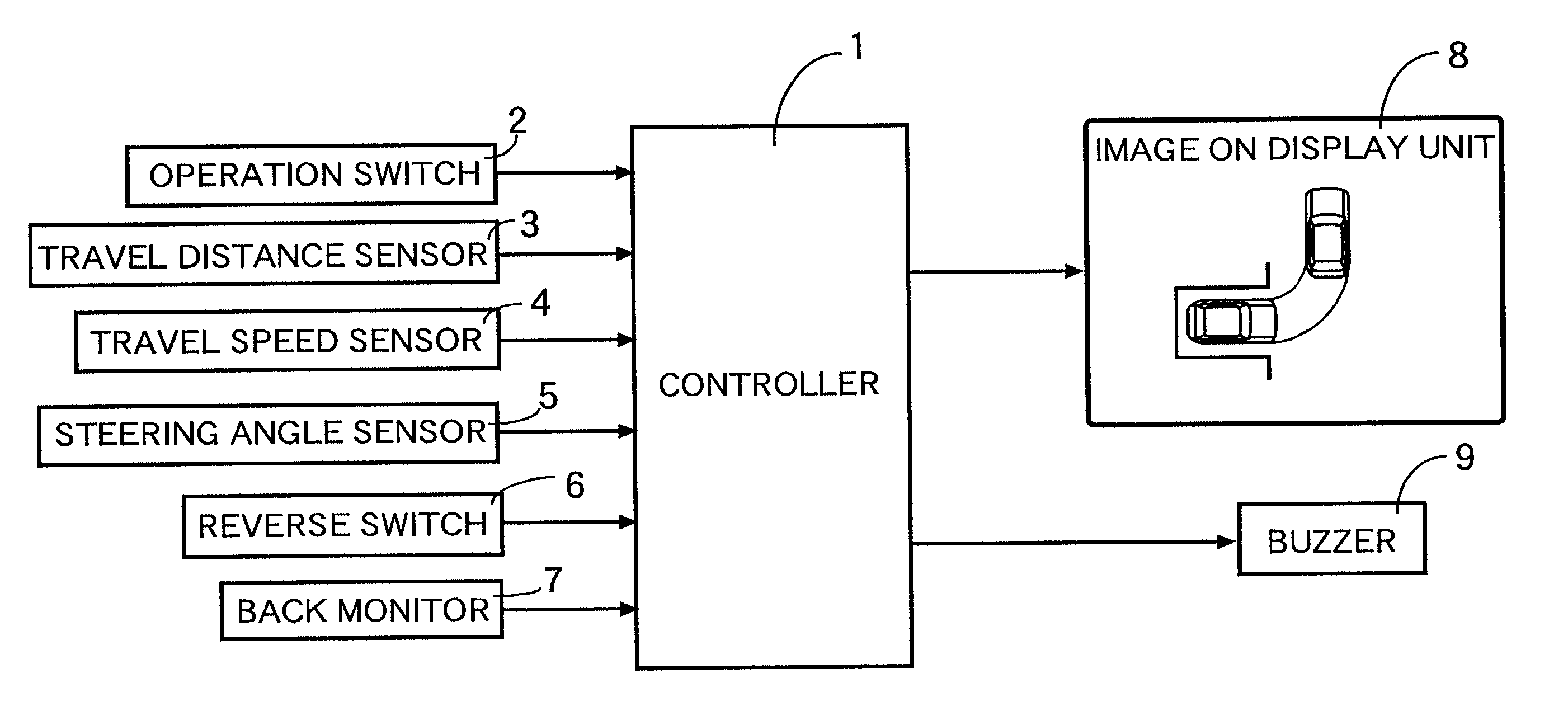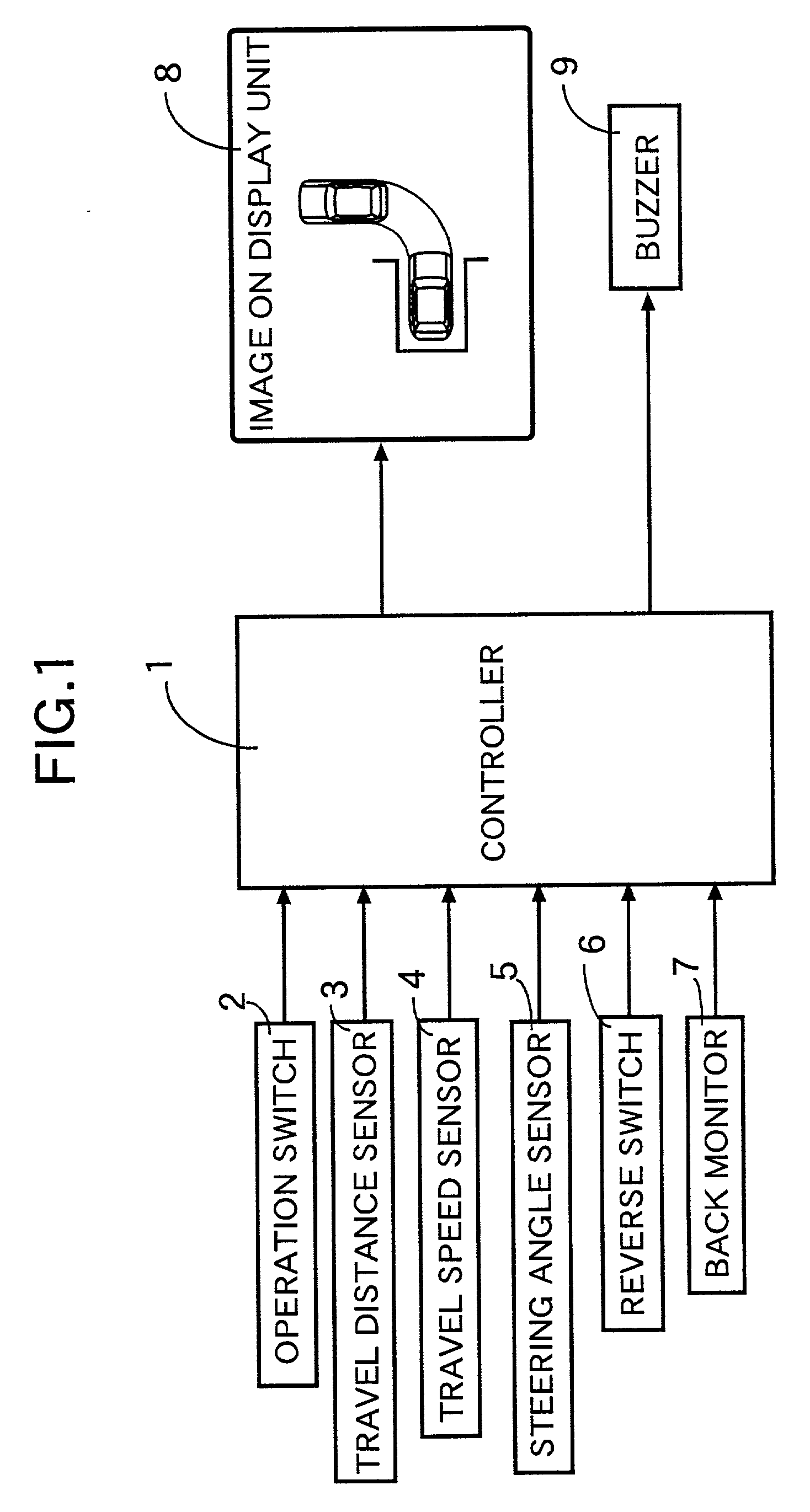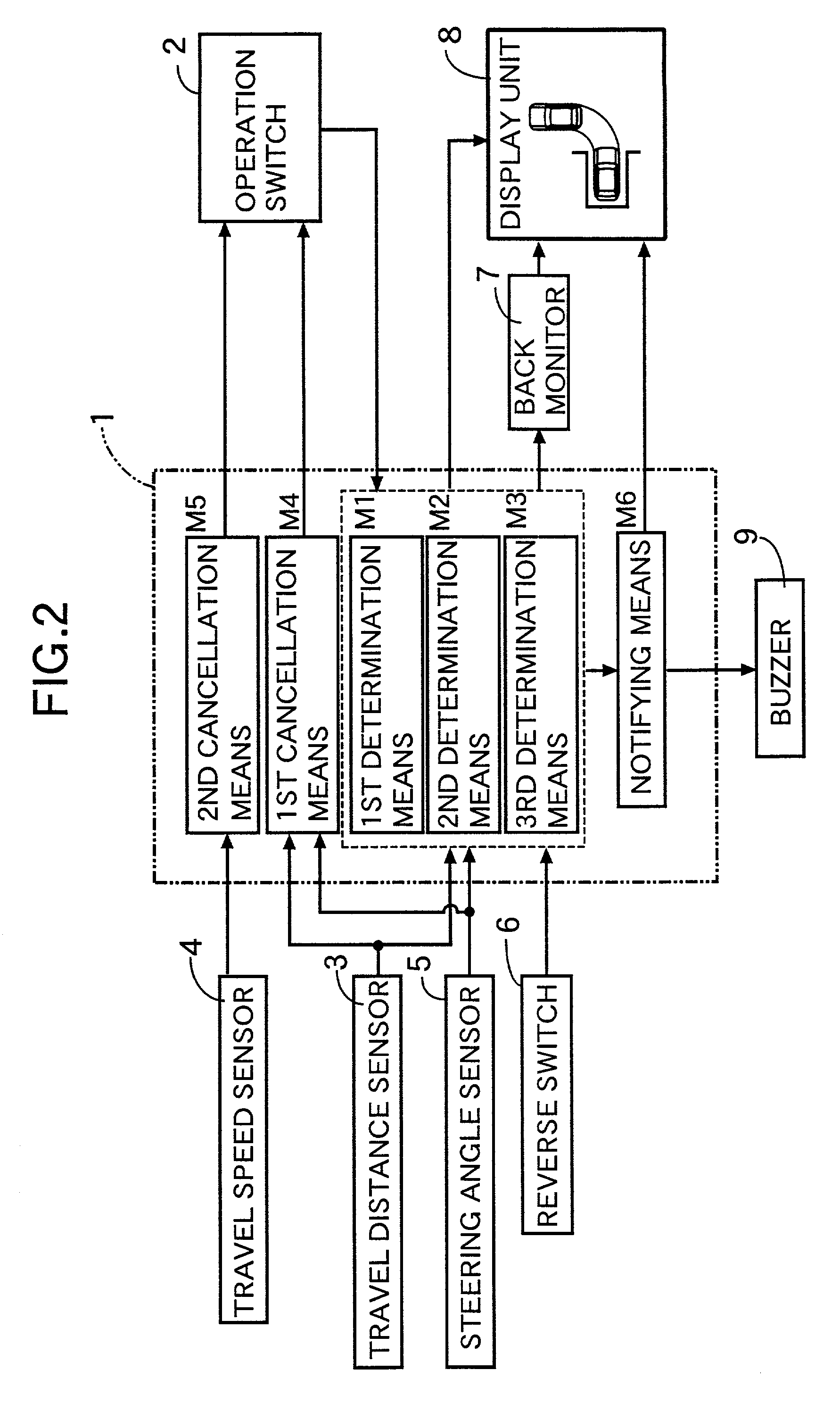Parking aid system
a technology of parking aid and aid system, which is applied in the direction of braking system, pedestrian/occupant safety arrangement, instruments, etc., can solve the problems of high cost of conventional parking aid system, inability to instinctively tell whether the driver is going to park or not, and inability to meet the needs of drivers
- Summary
- Abstract
- Description
- Claims
- Application Information
AI Technical Summary
Benefits of technology
Problems solved by technology
Method used
Image
Examples
first embodiment
[0107] the present invention is explained below with reference to FIGS. 1 to 11.
[0108] As shown in FIG. 1, a parking aid system mounted in a four wheel vehicle has a controller 1 including a microcomputer. An operation switch 2, a travel distance sensor 3, a travel speed sensor 4, a steering angle sensor 5, a reverse switch 6, a back monitor 7, a display unit 8, and a buzzer 9 are connected to the controller 1.
[0109] The operation switch 2 comprises a power switch, with which a driver switches on / off the power to the parking aid system, and a parking mode selection switch. The parking mode selection switch selects from three parking modes, that is `left reverse parking mode`, `right reverse parking mode` and `left parallel parking mode`. The parking mode selection switch is either formed from three switches so as to correspond to the three parking modes or is formed from one switch so that the three parking modes are switched in turn by pressing the one switch. Alternatively, the op...
second embodiment
[0137] the present invention is explained below with reference to FIGS. 12 to 18.
[0138] In the above-described first embodiment, when left reverse parking is performed, the subject vehicle travels forward in a straight manner from the start position to the reverse starting position. In the second embodiment, the subject vehicle travels forward and to the right from the start position to the reverse starting position. The state at the start position is the same as that of the first embodiment shown in FIG. 4, and FIG. 12 illustrates a state where the subject vehicle has traveled forward and to the right from the start position. As the subject vehicle travels forward and to the right from the start position, the subject vehicle position is calculated based on the distance traveled detected by the travel distance sensor 3 and the steering angle detected by the steering angle sensor 5. The expected parking position is calculated when the subject vehicle is reversed with the maximum stee...
third embodiment
[0156] the present invention is explained below with reference to FIGS. 19 to 22.
[0157] In the third embodiment of the present invention, when left reverse parking is carried out, the subject vehicle travels forward and to the right from a start position to a reverse starting position in the same manner as in the above-described second embodiment. The course along which the subject vehicle moves from the start position to the reverse starting position is the same as that in the second embodiment illustrated in FIGS. 12 and 13.
[0158] As shown in FIG. 13, when the subject vehicle reaches a correct reverse starting position, the first determination means M1, and the second determination means M2, determine that the expected parking position displayed on the display unit 8 coincides with the target parking position, and the notifying means M6 notifies the driver by operation of the buzzer 9. The expected trajectory and the expected parking position at this point are those that are obtai...
PUM
 Login to View More
Login to View More Abstract
Description
Claims
Application Information
 Login to View More
Login to View More - R&D
- Intellectual Property
- Life Sciences
- Materials
- Tech Scout
- Unparalleled Data Quality
- Higher Quality Content
- 60% Fewer Hallucinations
Browse by: Latest US Patents, China's latest patents, Technical Efficacy Thesaurus, Application Domain, Technology Topic, Popular Technical Reports.
© 2025 PatSnap. All rights reserved.Legal|Privacy policy|Modern Slavery Act Transparency Statement|Sitemap|About US| Contact US: help@patsnap.com



